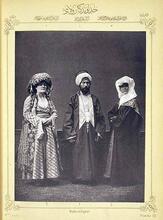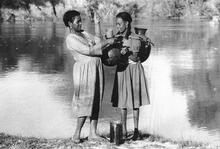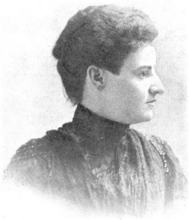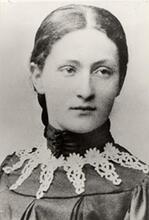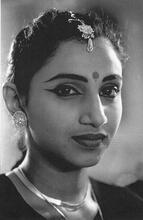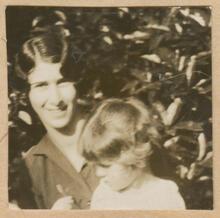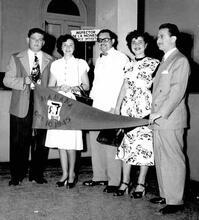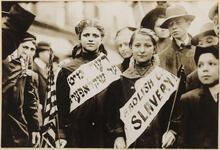Bene Israel
The Bene Israel constitutes one of three traditional Jewish communities in India, numbering 20,000 at its peak in the early 1950s. The majority of the Bene Israel have since left India, with most going to Israel. Never having experienced antisemitism in India, Bene Israel have a deep attachment to their native land. Women were the producers and preservers of Bene Israel culture in India, and many were highly influential leaders in their communities, academia, and secular and religious life. Bene Israel were among the first women to enter the nursing and teaching fields in India, with several becoming principals of well-known girls’ schools. In the twentieth century, Bene Israel women worked in government, medicine, and law, created Jewish organizations, and were influential in the progressive and Liberal Jewish movement in India.
History and Women’s Roles
Of the three traditional Jewish communities in India—the Bene Israel, the Cochin Jews, and the Iraqis or Baghdadis—that of the Bene Israel of Maharashtra in western India was by far the largest. Numbering perhaps 20,000 at its peak in the early 1950s, the majority of the Bene Israel have since left their homeland—most going to Israel—so that only about 4429 remain in India as per the India Census 2011. By the 2020s there were over 80,000 individuals of Bene Israel origin in Israel, with the community there now in its fourth generation. Never having experienced antisemitism in India, Bene Israel the world over have fond memories of and a deep attachment to their native land.
In India, the women were the producers and preservers of Bene Israel culture, which, except for the observance of Jewish practices, rituals, festivals, and dietary laws, was similar to that of their Hindu and Muslim neighbors. Widow remarriage was rare until the mid-twentieth century, and divorce rates were and are low compared to those of western countries, although they have risen among Bene Israel in Israel. Polygyny, practiced occasionally but never truly accepted by the community in the nineteenth century and early twentieth, has virtually disappeared.
Bene Israel women, with their strong religious beliefs, were considered to have the power to hold the family together. Several of them were very influential, playing important roles not only in their extended families but also in the villages, helping people in need from all communities and settling disputes. They often had close relationships with their Hindu and Muslim neighbors, attending each other’s weddings, birth celebrations, and other events, both happy and unhappy. These relationships helped them in the professions they adopted in the early twentieth century, as nurses, doctors, and teachers. A notable example is Annie Samson (1903-1995), the founding principal of Anjuman-i-Islam Saif Tyabji Girls High School and Junior College of Arts and Science (est. 1939) in Mumbai. At a time when Muslim parents kept their young girls in Purdah or seclusion, Samson, who was backed by the progressive Bohra Badruddin Tyabji family, went from home to home persuading parents to educate their girls by sending them to school. Today, this school has a student population of about 5500 Muslim girls.
In the nineteenth and early twentieth centuries, Bene Israel girls from poor and lower-middle-class families often left school early, and some families feared that a highly educated girl would have difficulty finding a husband. Many girls from middle- and upper-middle-class families were educated, from the late nineteenth century on, at Huzurpaga High School for Indian Girls, a famous boarding school in Pune where Marathi was the language of instruction. Three Bene Israel women—Abigail Moses, Rachel Verulkar, and Mozelle Isaac—served as principals of this school. By the mid-twentieth century, most girls from these families, like those from the Hindu upper castes, switched to English-language schools, which their brothers had been attending earlier. After completing university in India, especially talented Bene Israel women, like their male counterparts, continued their education in England.
Bene Israel were among the first women to enter the nursing and teaching fields and had a particularly strong impact in Bombay in the latter arena. Preferring to teach in girls, rather than co-educational, schools, they taught not only academic subjects but also music, handicrafts, and gym. Several became principals. Later, a number of Bene Israel women worked in government service and others became physicians and lawyers. In the twenty-first century, the occupational profile of Bene Israel women has expanded into the corporate world, journalism, academics, medical research, and computer hardware and software engineers. The Baghdadi Jewish school—Sir Jacob Sassoon High School in Mumbai—has its first Bene Israel woman principal, and the Bene Israel synagogue Shaar Ha-Shamaim (Thane) in the Mumbai Metropolitan Region was the first to have a woman president, Flora Joseph Samuel Bamnolkar, from 1996 to 2008. As of 2023, Tiphereth Israel Synagogue in Mumbai has a woman president, a post normally occupied by men in traditional conservative synagogues.
When families began immigrating to Israel after its founding in 1948, depending on their level of education, many Bene Israel women worked in Israel Aerospace Industries (est. 1953) and its subsidiary Elta Systems Ltd (est. 1967). The less educated worked in the production line or in quality control, and those who were graduates and postgraduates worked in marketing and administration. Many educated women also worked in banks and as ground staff in the then-nascent ELAL airlines. This pattern was repeated in the south in Beersheva and Dimona, where many Bene Israel families were settled.
An institution that played a stellar role in imparting skills-based training for Bene Israel women making Aliyah was ORT India (est. 1960 in Mumbai), which conducted certificate courses in shorthand and typing, hairdressing, cooking, and later computers and early childhood education. This helped the transition of many young girls and married women into Israeli society.
Today, Bene Israel women in Israel can be found in diverse occupations. Many have completed college degrees and gone into computer science, architecture, urban planning, law, medicine, research, psychology, education, and social work, among other fields. There is also an urgency to maintain their cultural identity, especially as the second and third generations have married Jews from other communities and many no longer speak Marathi or practice Bene Israel customs as their parents or grandparents did. In this context, Sophie Judah’s collection of short stories, Dropped From Heaven (2007), uses a feminine lens to deal with issues of modernity that confronted the community on their immigration to Israel. Writer and activist Ilana Shazor’s (Sogaokar) compilation of women’s biographies and autobiographies Mother India, Father Israel (2018) deals with memories, some traumatic, of their mainstreaming into Israeli society, especially after having come from a gentler Indian society.
North America is also home to growing communities of Bene Israel.
In Toronto, Canada, home to a sustainable community of Indian Jews, plans are afoot to build a synagogue. Women from this community are largely professionals, such as doctors, medical researchers, professors, lawyers, media personnel, and in the corporate world. This community is expanding with an influx of Bene Israel from Israel.
In the United States, too, most Bene Israel women, whether among the early immigrants of the 1950s through to the 1970s or among those who arrived later, have urban professional backgrounds. The greater concentration of this community is in the Greater New York area. Though the community is dispersed, the women maintain Bene Israel customs and cuisine at home irrespective of the synagogue they belong to. Many participate actively in their congregations, whether Jews of European origin and their descendants, including most of North and South American Jewry.Ashkenazi or Descendants of the Jews who lived in Spain and Portugal before the explusion of 1492; primarily Jews of N. Africa, Italy, the Middle East and the Balkans.Sephardic, and they are often called on to give lectures on their community followed by an Indian Jewish meal.
Although traditionally they preferred not to marry out of the community, Bene Israel women sometimes did, and still do, especially if a highly educated woman could not find a suitable mate within the community. They also had the option of remaining single and supporting themselves through their own careers before doing so became acceptable for middle-class Hindu women. There are still efforts to arrange marriages, or at least to introduce young people, in India, Israel, and North America. In Israel, in their homes and women’s organizations, the women are also the main preservers of Indian Jewish culture. Although they normally wear Western clothes, they will don saris or other Indian-style dresses for weddings, henna ceremonies, and other events.
Notable Bene Israel Women
Although many individual Bene Israel women have made important contributions to their community and country, the achievements of only a few can be singled out.
Dr. Jerusha Jhirad (1890–1984), the first female Indian Jewish physician, was a distinguished gynecologist in Bombay. She was the first woman to be awarded the Government of India scholarship to study in the United Kingdom, where she earned an MD in Obstetrics and Gynecology from the University of London. She expanded and improved the Cama and Albless Hospitals for Women and Children in Bombay during her tenure as their Superintendent from 1928 to l949 and served as president of the Bombay Obstetrics & Gynecological Society in 1948. She presided over the sixth All India Obstetrics and Gynecological Congress held at Madras in 1950, in which it was decided to form the Federation of Obstetric and Gynecological Societies of India (FOGSI), as well as to start the Journal of Obstetrics and Gynecology of India. Dr. Jhirad was elected the first President of the Federation and was, at the same time, requested to be the editor of the journal. She retired as editor in 1968. In appreciation of her services as editor, the Federation decided to honor her as the founder editor. For these achievements and her efforts to improve medical education in India and advance the cause of women doctors, she was awarded the MBE (Member of the British Empire) (Civil) by the British and, in l966, conferred the Padma Shri award by the government of India. Dr. Jhirad was also highly appreciated by her community for founding the Stree Mandal (Women’s Association) in l913, providing a place where women could meet and exchange ideas. It also offered classes in Marathi (the local language), cooking, needlework, and dressmaking to girls who had not completed their education and promoted the study of Bible and religion. In l925, Dr. Jhirad founded the Jewish Religious Union, which was linked with the World Union of Progressive Judaism and provided the only Liberal, English-speaking alternative to the traditional synagogues in Bombay. As such, it attracted the upper middle class of Bene Israel. In l975, Dr. Jhirad wrote a short autobiography.
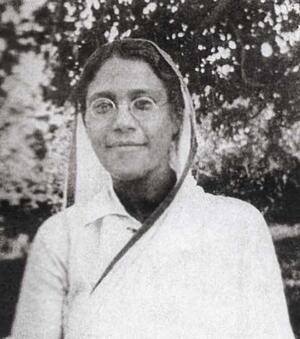
Educator Rebecca Reuben was the first woman to rank first in the matriculation examination for Bombay University and went on to study at the University of London and Cambridge University. She later became principal of the Bene Israel school in Bombay. From the late nineteenth century onwards, Bene Israel girls from middle and upper-middle class families like Reuben's were well-educated, many attending university in India and then going on to England for further studies..
Photographer: David E. Reuben [Rebecca Reuben, ed. Nina Haeems (Bombay: 2000)]
Rebecca Reuben (1889–1957), a well-known educator, was a revered figure in the community whose activities in many spheres enriched the lives of the Bene Israel. Although Reuben’s Jewishness was very important to her, she was an outstanding example of the phenomenon that among the Bene Israel, it was secular, rather than religious leadership that conferred status. In 1905, Reuben, who came from a highly educated family, became the first woman to rank first in the matriculation examination from Bombay University, where she specialized in history and Hebrew. She went on to earn a teaching diploma from the University of London and continued studying Hebrew with Dr. Israel Abrahams at Cambridge University. Appointed the Lady Superintendent of the Government Teachers’ Training College at Baroda in l917, Reuben gave up a promising career in the broader educational arena in order to serve the Bene Israel community by becoming the principal of its school, the co-educational Sir Elly Kadoorie School in Bombay, a post she held from l922 to l950. She was the author of the Ashok Readers, a series of English readers widely used in non-English medium schools in Maharashtra, and other instructional materials, and she published a monthly magazine for Jewish children, Nofeh. Reuben also wrote articles about the Bene Israel and edited the Bene Israel Annual and Year Books from l917 to l920. She organized activities for the Bene Israel Stree Mandal (Women’s Association) and the progressive Jewish Religious Union. She also made significant contributions in the field of education in western India, serving on many government boards. In l947 she represented Indian Jewry at the First World Conference for Jewish Education, held in Jerusalem.
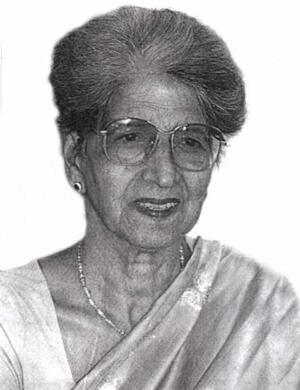
After moving to Israel, educator Flora Samuel organized the Indian Women's Organiation, which aids Indian women in preserving and demonstrating their community's culture and customs. Bene Israel women were traditionally the producers and preservers of the group's unique culture and, with their strong religious beliefs were deemed to have the power to hold the family together. The Bene Israel of Maharashtra in western India was the largest of the three Jewish communities of India, numbering about 20,000 at its peak in the early 1950s, though the majority have since emigrated to Israel.
Institution: Mei Boli vol. 16, January 1999 (Israel).
Another important Bene Israel educator, Flora Samuel, née Manik Ashtamkar (l924–1998), was principal of the Sir Elly Kadoorie School from 1955 to l964, having previously taught in a number of other schools. She took pride in being known as a strict disciplinarian, a trait that was necessary in a co-educational school in India. She was devoted to her community in both India and Israel, where she settled in l964. Fluent in Sanskrit (in which, somewhat unusually for an Indian Jew, she had majored in college), Marathi, English, and Hebrew, Samuel taught Sanskrit for a short time at Hebrew University. In Israel, she continued her work as a teacher, having talked her way out of taking the refresher courses in English, psychology, and educational methods required for a permanent teacher’s license by citing her master’s degree in education and her years of experience as a principal. Flora Samuel continually fought against the lack of respect for Indian degrees that she felt was manifested in Israel. At the suggestion of Na’amat, the women’s branch of the Histadrut, she organized an Indian Women’s Organization with branches in several cities, with the idea of instilling confidence among Bene Israel women, getting them to come out of their homes and participate in community activities, educating them in Israeli ways of child-rearing, and helping them with their problems. Devoting themselves to preserving and demonstrating the culture and customs of the community, of which Samuel was very proud, the clubs worked with Israeli museums on exhibitions about Indian Jews. Samuel, who was recognized internationally for her excellent Marathi style, edited Mai Boli, a quarterly publication that reached Bene Israel in both India and Israel. She revived the kirtans, early Bene Israel music dramas based on Biblical figures; they were performed in Marathi by the Women’s Organization of Lydda, which she headed. Samuel was active with the World Marathi Union and was instrumental in the selection of Israel as the venue for its biennial conference in l996. Many Indian Marathi writers from all over the world were introduced to Israel as a result. That same year, Flora Samuel published a memoir in Marathi entitled Sanskrutisangam (Confluence of Cultures), about her experiences in both India and Israel.
Meera Jacob Mahadevan, née Mendrekar (1930–1979), originally from Karachi in undivided India, made a significant contribution to the socio-economic well-being of India’s marginalized children by originating and implementing the idea of a network of mobile creches. These establishments, at first large tents with basic equipment and later simple brick units, provided educational and health services for the neglected children of poor, migrant construction workers. The first one opened in l969. Eventually these facilities, funded domestically and internationally but also relying heavily on volunteer workers, were set up for city slum-dwellers, especially in Delhi and Bombay. At night the creches were used for adult literacy and health education classes. Mahadevan also wrote short stories and novellas in Hindi as well as a novel entitled Apna Ghar (A Home of One’s Own), translated into English under the title Shulamith (1980). The novel dealt with members of a Bene Israel family who emigrated to Israel in the l950s and their relationships with those who remained in India.
Rachel Reuben (1934-2010), PhD, scientist in medical entomology, was the founder and director of the Centre for Research in Medical Entomology (est. 1985, Madurai), which was later renamed the Indian Council for Medical Research-Vector Control Research Center. Since childhood, Reuben was fascinated with every bug, beetle, and bee, whether in a garden or in the field or forest, so it was a natural culmination of this passion that led to her completing her PhD thesis at the University of Scotland on “The Ecology of Biting Midges in Scotland.” On her return to India, her work was largely on mosquito control research covering vector-borne tropical diseases like malaria and dengue. A naturalist at heart, Reuben loved doing field research and was a supporter of the Palni Hills Conservation Council (PHCC) and even set up an arboretum under the auspices of the PHCC Environment Center in memory of her father. On retirement, she took an active interest in the research undertaken by the Bombay Natural History Society, first as an executive member and then as a member of its sub-committees.
Leela Samson (b. May 6, 1951) is a renowned Bharat Natyam instructor, danseuse, choreographer, writer, and actress. Samson trained in this classical Indian dance form beginning at the age of nine at Kalakshetra (Chennai), an arts academy founded by Rukmini Devi Arundale. She was appointed director of this renowned school in 2005 and remained so until 2012. She is well-known not just as a dancer but also as a choreographer and has travelled overseas performing with dance troupes. She established the Spanda Dance Company in 1995. Her contribution to Bharat Natyam earned her India’s fourth-highest civilian award, the Padma Shri, in 1990 and the Sangeet Natak Akademi Award, the highest Indian award in the performing arts, in 2000. Samson was also chair of the Censor Board for Film Certification in India and the Sangeet Natak Akademi. Since 2015 she has acted in Tamil, Hindi, Telugu, and Malayalam films.
Esther David (b. 1945) is a sculptor, art critic, and lecturer on art history at the School of Architecture, School of Interior Design and National Institute of Fashion Technology in Ahmedabad. Former chair of the Gujarat State Lalit Kala Akademi, she has written nine books, including The Walled City (1997), an autobiographical novel about growing up Jewish in Ahmedabad; By the Sabarmati (1999), a collection of stories about women; and the Book of Esther (2002).
Esther Solomon (b. 1927), also of Ahmedabad, a Sanskrit scholar and professor at Gujarat University, was awarded a Presidential Certificate of Honor in l983 for outstanding contributions to Sanskrit and a Padma Shri in l992. She also wrote a short history of the Bene Israel of Gujarat in the Gujarati language that was published by the University of Baroda.
Other Bene Israel women who remained in India and made a mark can be mentioned only briefly. Sarah Israel (1926-2018) was an obstetrician-gynecologist who worked in the Ministry of Health and Family Welfare in India's central government and went on some WHO assignments oversease as a representative of the Indian government. Nina Haeems (b. 1941), a retired professor of sociology at Wilson College in Bombay, edited a book about her aunt, Rebecca Reuben; co-wrote a book Indian Jewish Women: Stories From Bene Israel Life (2014); and the occasional series On Being Jewish, Indian and Women. Others, such as Elizabeth Reuben (b. 1937), a professor of literature, had scholarly careers. Rachel Gadkar (1930-2008) was the founder and editor of Shayali, a popular periodical by and about Bene Israel women read in both India and Israel. Rivka Israel (b. 1960) is an editor at Marg, a leading Indian publisher. Joyce Shankaran (b. 1949) was a highly-ranked officer with the Indian Administrative Service in Maharashtra. Dr. Zimra Raymond Israel, a scientist with expertise in vaccine development, was involved in the early years of HIV/ AIDS research and has 35 publications. She has held senior management positions at Pfizer Inc., USA, and MSD Wellcome Trust. Among the younger generation, Ophira Samuel Pingle (b. 1974) is among India’s top one hundred corporate affairs professionals and is currently senior director for India & Lead, Asia Pacific, Middle East and Africa, corporate & government affairs, Mondelez International.
Among the many Bene Israel in Israel, notable women achievers include Molly Malekar, the current head of Amnesty International, Israel, who has an illustrious career in human rights and advocacy and writer and women’s rights activist Ilana Shazor. Artist Siona Benjamin; poet and author Zilka Joseph; and Dr. Carmela Abraham, emeritus professor at the Chobanian & Avedisian School of Medicine at Boston University, are well-known in their fields in the United States. In Canada, sisters Dr. Rita (Judah) Samuel and Dr. Sybil Judah are known in the medical field. The former was a physician-scientist and medical director in United States-based pharmaceutical companies heading drug trials for cardiovascular problems, heart failure, thrombosis, lipid metabolism, oncology, diabetes, and hypertension, while the latter is a practicing doctor and medical director of obstetrics-gynecology at Unity Health, Toronto. Barrister and solicitor Ramona Abraham has a solo practice in Toronto.
For future contributions of Bene Israel women, we will most likely have to look mainly to Israel and to western countries where they have settled.
Census of India, National Population Register & Socio Economic and Caste Census, 2011; https://censusindia.gov.in/nada/index.php/catalog/11398.
David, Esther. The Walled City. Chennai, India: l997.
An autobiographical account of growing up Jewish in Ahmedabad in the mid-twentieth century.
Haeems, Nina, and Alysha Haeems. Indian Jewish Women: Stories From Bene Israel Life. New Delhi: Mosaic Books, 2014.
Haeems, Nina (compiler and editor). Rebecca Reuben: Scholar, Educationist, Community Leader, 1889–1957. Mumbai [Bombay]: 2000.
An interesting compilation of writings by and about Rebecca Reuben, including her letters from her trip to Israel.
Haeems, Nina and Sonal Shukla. On Being Jewish, Indian and Women: An Occasional Communication. Mumbai (Bombay): 1997–2000.
This quarterly periodical was published for a short time with the aim of collecting stories, folklore, songs, and pieces written by and about Bene Israel, Baghdadi, and Cochin Jewish women.
Isenberg, Shirley B. India’s Bene Israel: A Comprehensive Survey and Sourcebook. Bombay and Berkeley: l988.
Many sections in this book, written by an anthropologist, deal with the traditional customs and practices of Bene Israel women, particularly as they related to religious ritual and life cycle occasions.
Jhirad, Abigail. A Dream Realised: Biography of Dr. Jerusha J. Jhirad. Bombay: l990.
Jhirad, Jerusha. C.N. Purandare, M.A. Patel, and G. Balsarkar. “Indian Contribution to Obstetrics and Gynecology.” Journal of Obstetrics and Gynecology India 62, 266–267 (August 2012).
Kehimkar, Haeem Samuel, History of the Bene-Israel of India. 1887. Tel Aviv: l937.
This standard history of the Bene Israel, written at the end of the nineteenth century (although published forty years later) by a leading member of the community, refers throughout the book to the roles and practices of Bene Israel women in that period.
Mahadevan, Meera Jacob. Shulamit. New Delhi: 1975.
A novel about a Bene Israel family, some of whose members emigrated to Israel in the l950s.
Roland, Joan. The Jewish Communities of India: Identity in a Colonial Era. New Brunswick, NJ: l998.
Contains more details on the Stree Mandal (Women’s Association), the Sir Elly Kadoorie School, and the Jewish Religious Union.
Roland, Joan. “Transforming Identities: Bene Israel Immigrants in Israel and the United States” In Transnational Traditions: New Perspectives on American Jewish History, edited by Ava F. Kahn and Adam D. Mendelsohn. Detroit: Wayne State University Press, 2014.
Samuel, Flora (Manik Ashtamkar). Sanskrutisangam (Marathi). Mumbai [Bombay]: l996.
This book, whose title in English means “Confluence of Cultures,” is an autobiographical memoir of her life in India and Israel. The political situation in Israel is dealt with, although she does not give her own views on these issues.
Samuel, Flora. “The Bene Israel Cradle Ceremony: An Indian Jewish Ritual for the Birth of a Girl.” Bridges 7/1 (1997–98): 43–44.
Strizower, Schifra. The Bene Israel of Bombay: A Study of a Jewish Community. New York and London: 1971.
Chapter seven contains a detailed discussion of marriage and the family, including issues around arranged marriages, divorce and widow re-marriage, joint household, and polygyny as they existed in the mid-twentieth century.
Weil, Shalva. "The Bene Israel Indian Jewish Family in Transnational Context." Journal of Comparative Family Studies, Vol. 43, No. 1 (January-February 2012): 71-80.



